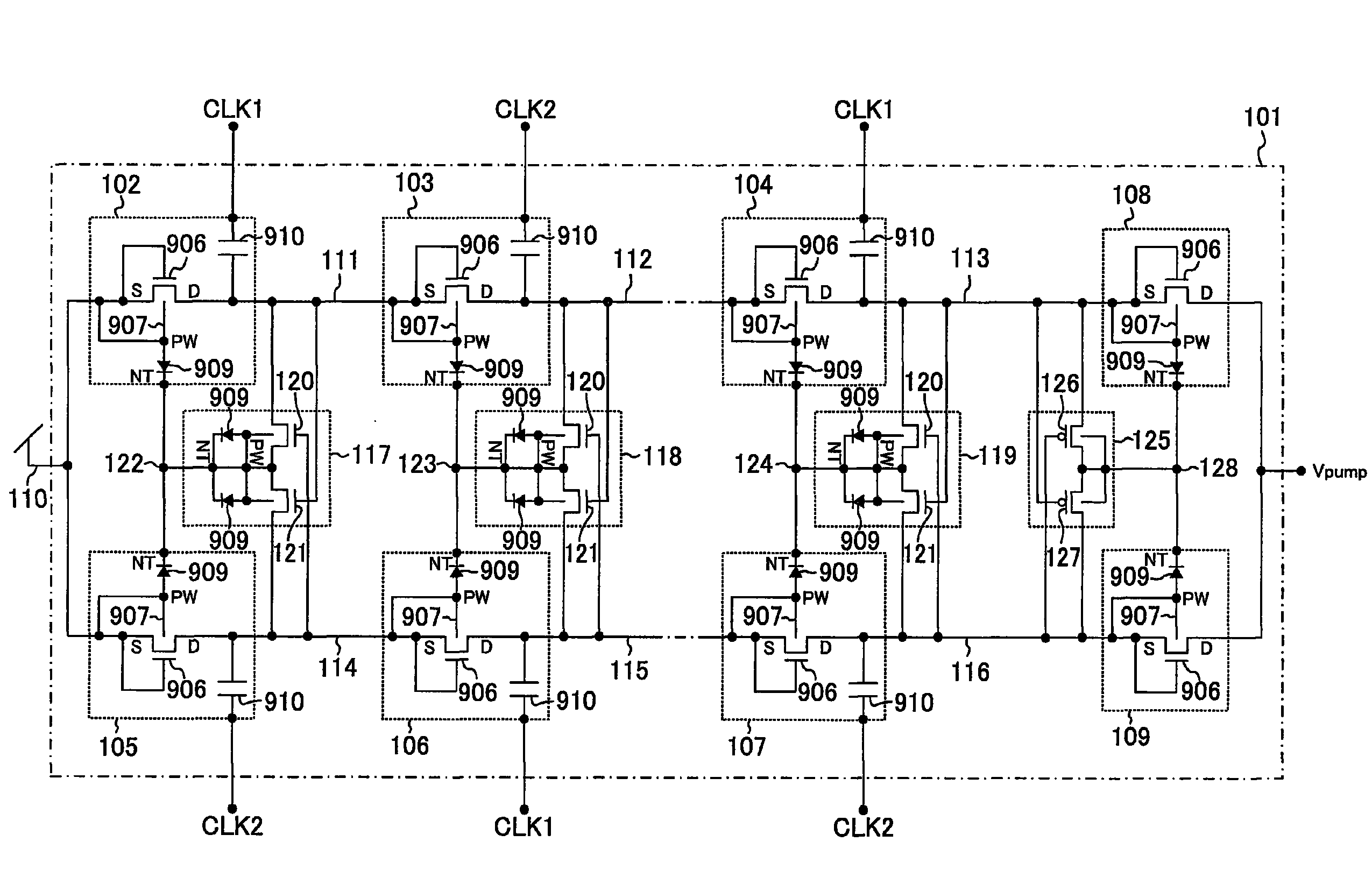Booster circuit
a technology of booster circuit and circuit, applied in the direction of power conversion system, dc-dc conversion, instruments, etc., can solve the problems of increase in layout area and decrease in boost efficiency, and achieve the effect of reducing layout area, improving easiness of design, and suppressing the increase in circuit area
- Summary
- Abstract
- Description
- Claims
- Application Information
AI Technical Summary
Benefits of technology
Problems solved by technology
Method used
Image
Examples
Embodiment Construction
[0068]Hereinafter, a booster circuit according to the present invention will be described, by way of examples, with reference to the accompanying drawings.
[0069]FIG. 1 shows an exemplary configuration of the booster circuit of the present invention. In FIG. 1, 101 indicates a two-parallel booster circuit which receives two-phase clock signals CLK1 and CLK2 and generates an output terminal voltage (boosted voltage) Vpump by a boosting operation. 102, 103, 104, 105, 106, and 107 indicate boosting cells which are arranged in a first line and a second line, where CLK1 is input to the odd-numbered stages on the first line and the even-numbered stages on the second line, and CLK2 is input to the even-numbered stages on the first line and the odd-numbered stages on the second line. 108 and 109 indicate backflow preventing circuits which prevent backflow of the boosted voltage Vpump. 110, 111, 112, 113, 114, 115, and 116 indicate I / O terminals of the boosting cells 102 to 107. 117, 118, and...
PUM
 Login to View More
Login to View More Abstract
Description
Claims
Application Information
 Login to View More
Login to View More - R&D
- Intellectual Property
- Life Sciences
- Materials
- Tech Scout
- Unparalleled Data Quality
- Higher Quality Content
- 60% Fewer Hallucinations
Browse by: Latest US Patents, China's latest patents, Technical Efficacy Thesaurus, Application Domain, Technology Topic, Popular Technical Reports.
© 2025 PatSnap. All rights reserved.Legal|Privacy policy|Modern Slavery Act Transparency Statement|Sitemap|About US| Contact US: help@patsnap.com



